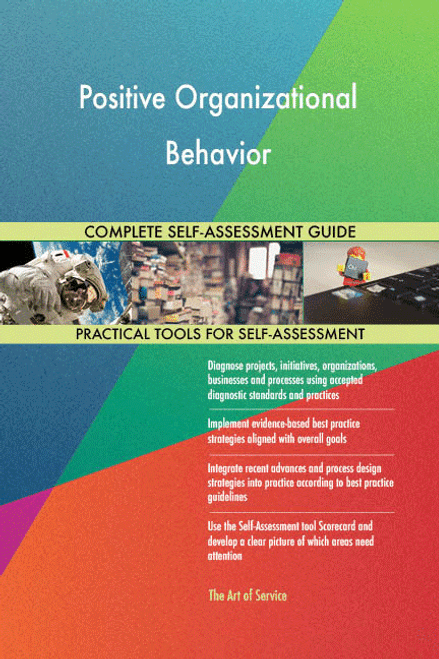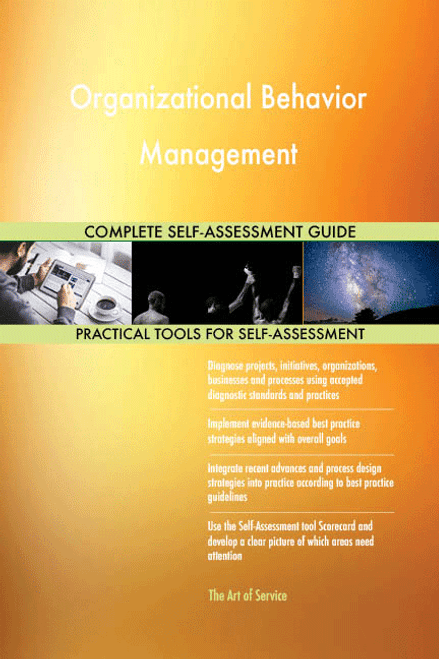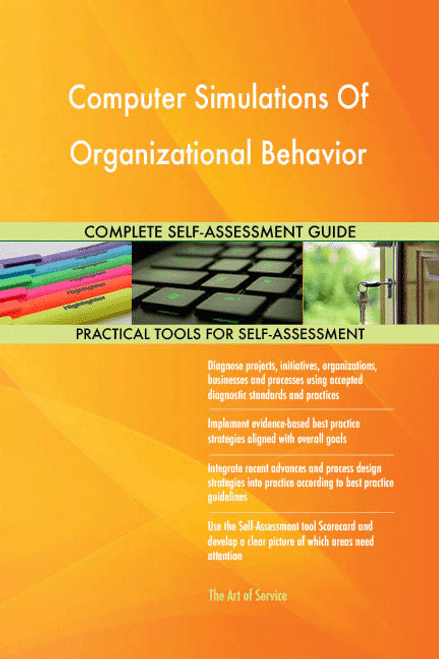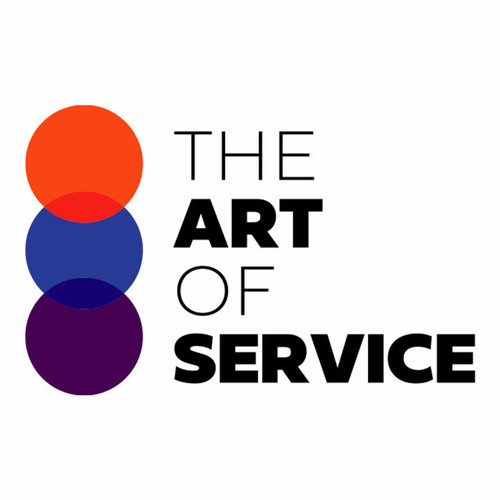More Uses of the Organizational Behavior Toolkit:
- Govern: champion Organizational Behavior Change as it relates to the use of data; realizing vision of data managed as an asset.
- Oversee team execution in accordance with Project Plans, tools, and methods, and support Resource Planning and acquisition.
- Develop short and long term goals, KPIs, and objectives, and develop and execute against overall project and/or operational plans.
- Be accountable for using your expertise about people, Organizational Behavior and motivation, you analyze how people, teams, or whole parts of your organization can be optimized to achieve results.
- Establish achievable milestones for each project according to the task schedule with input from the members of the Project Team.
- Coordinate/communicate with peers work with other Project Managers to avoid or eliminate conflicts in schedule due to the changes in various projects.
- Develop roadmap framework for Future Growth, leveraging an Agile Methodology mind set Influence Investment Portfolio allocations and partner to mobilize an execution framework to enable key transformational capabilities to drive growth.
- Be accountable for translating advanced technical concepts into compelling stories that drive measurable change for your internal and External Stakeholders.
- Be accountable for working knowledge about workforce science topics like employee selection, development, engagement, personality assessment, cognitive ability, and teams.
- Manage Risks throughout change initiatives by conducting Risk Analysis and developing related Mitigation Plans.
- Identify potential people side risks and anticipated points of resistance, and develop specific plans to mitigate or address the concerns.
- Manage project implementation with assigned Project Team, ensure that all steps and procedures are taken according to Standard Operating Procedures and that all work is completed as planned and scheduled.
- Be able to demonstrate the use of innovative and creative ideas to address business challenges and opportunities.
- Manage and develop project staff understand the strengths and areas needing improvement for assigned project staff.
- Maximize project profitability through appropriate project budgeting/pricing, utilization of resources and cost controls, maximize the profit margin on individual projects.
- Drive Organizational Behavior Change as it relates to the use of data; realizing vision of data managed as an asset.
- Maintain contact with clients meet regularly with key clients to consider current projects, evaluate organization performance, and identify other Business Opportunities either with current clients or through referrals.
- Use results standard processes and methodology to evaluatE Learning effectiveness through a program of regular observation of training professionals and through reviewing performance data.
- Confirm your group provides expert facilitation, coaching, and consultation to a range of leaders, supervisors, and employees regarding assigned program/initiative methods, tools, and strategies.
- Govern: technical expertise regarding Data Models, Database Design development, Data Mining and segmentation techniques.
- Be certain that your organization complies; conducts training for instructors and supervisors on techniques and skills to manage and develop employees at all levels of your organization.
- Lead the Design And Delivery of training programs across your organization as part of the broader learning and Organization Development team.
- Support Team execution in accordance with Project Plans, tools, and methods, and support Resource Planning and acquisition.
- Analyze and understand existing development gaps and identify program needs to inform your organization wide Learning And Development strategy.
- Confirm your project ensures a continuous Evaluation Process and Quality Improvement program for simulation based activities and ensures that the simulation program is consistent with standards of Best Practice.
- Utilize performance indicators and data concerning Service Delivery in preventive or foster care programs to identify program specific and systemic strengths and weaknesses.
- Consider existing or new Performance Management and incentive systems to drive change in Organizational Behavior.
- Ensure your organization represents the Human Resources office in organization meetings relative to organization of new units and reorganization of existing units.
- Establish that your team complies; as trusted Customer Advocates, the Practice helps organizations understand Best Practices around advanced Cloud Based Solutions, and how to migrate and/or re develop existing workloads in the cloud.
- Collaborate with Data Engineering and visualization engineers to access and manipulate data, account for Data Gathering requirements, and display results.
Save time, empower your teams and effectively upgrade your processes with access to this practical Organizational Behavior Toolkit and guide. Address common challenges with best-practice templates, step-by-step Work Plans and maturity diagnostics for any Organizational Behavior related project.
Download the Toolkit and in Three Steps you will be guided from idea to implementation results.
The Toolkit contains the following practical and powerful enablers with new and updated Organizational Behavior specific requirements:
STEP 1: Get your bearings
Start with...
- The latest quick edition of the Organizational Behavior Self Assessment book in PDF containing 49 requirements to perform a quickscan, get an overview and share with stakeholders.
Organized in a Data Driven improvement cycle RDMAICS (Recognize, Define, Measure, Analyze, Improve, Control and Sustain), check the…
- Example pre-filled Self-Assessment Excel Dashboard to get familiar with results generation
Then find your goals...
STEP 2: Set concrete goals, tasks, dates and numbers you can track
Featuring 999 new and updated case-based questions, organized into seven core areas of Process Design, this Self-Assessment will help you identify areas in which Organizational Behavior improvements can be made.
Examples; 10 of the 999 standard requirements:
- What is the right balance of time and resources between investigation, analysis, and discussion and dissemination?
- What is the estimated value of the project?
- Are you maintaining a past-present-future perspective throughout the Organizational Behavior discussion?
- Are required metrics defined, what are they?
- How do you gather Organizational Behavior requirements?
- Are you paying enough attention to the partners your company depends on to succeed?
- Are procedures documented for managing Organizational Behavior risks?
- How do you implement and manage your Work Processes to ensure that they meet design requirements?
- What kind of analytics data will be gathered?
- Are the criteria for selecting recommendations stated?
Complete the self assessment, on your own or with a team in a workshop setting. Use the workbook together with the self assessment requirements spreadsheet:
- The workbook is the latest in-depth complete edition of the Organizational Behavior book in PDF containing 994 requirements, which criteria correspond to the criteria in...
Your Organizational Behavior self-assessment dashboard which gives you your dynamically prioritized projects-ready tool and shows your organization exactly what to do next:
- The Self-Assessment Excel Dashboard; with the Organizational Behavior Self-Assessment and Scorecard you will develop a clear picture of which Organizational Behavior areas need attention, which requirements you should focus on and who will be responsible for them:
- Shows your organization instant insight in areas for improvement: Auto generates reports, radar chart for maturity assessment, insights per process and participant and bespoke, ready to use, RACI Matrix
- Gives you a professional Dashboard to guide and perform a thorough Organizational Behavior Self-Assessment
- Is secure: Ensures offline Data Protection of your Self-Assessment results
- Dynamically prioritized projects-ready RACI Matrix shows your organization exactly what to do next:
STEP 3: Implement, Track, follow up and revise strategy
The outcomes of STEP 2, the self assessment, are the inputs for STEP 3; Start and manage Organizational Behavior projects with the 62 implementation resources:
- 62 step-by-step Organizational Behavior Project Management Form Templates covering over 1500 Organizational Behavior project requirements and success criteria:
Examples; 10 of the check box criteria:
- Cost Management Plan: Eac -estimate at completion, what is the total job expected to cost?
- Activity Cost Estimates: In which phase of the Acquisition Process cycle does source qualifications reside?
- Project Scope Statement: Will all Organizational Behavior project issues be unconditionally tracked through the Issue Resolution process?
- Closing Process Group: Did the Organizational Behavior Project Team have enough people to execute the Organizational Behavior Project Plan?
- Source Selection Criteria: What are the guidelines regarding award without considerations?
- Scope Management Plan: Are Corrective Actions taken when actual results are substantially different from detailed Organizational Behavior Project Plan (variances)?
- Initiating Process Group: During which stage of Risk planning are risks prioritized based on probability and impact?
- Cost Management Plan: Is your organization certified as a supplier, wholesaler, regular dealer, or manufacturer of corresponding products/supplies?
- Procurement Audit: Was a formal review of tenders received undertaken?
- Activity Cost Estimates: What procedures are put in place regarding bidding and cost comparisons, if any?
Step-by-step and complete Organizational Behavior Project Management Forms and Templates including check box criteria and templates.
1.0 Initiating Process Group:
- 1.1 Organizational Behavior project Charter
- 1.2 Stakeholder Register
- 1.3 Stakeholder Analysis Matrix
2.0 Planning Process Group:
- 2.1 Organizational Behavior Project Management Plan
- 2.2 Scope Management Plan
- 2.3 Requirements Management Plan
- 2.4 Requirements Documentation
- 2.5 Requirements Traceability Matrix
- 2.6 Organizational Behavior Project Scope Statement
- 2.7 Assumption and Constraint Log
- 2.8 Work Breakdown Structure
- 2.9 WBS Dictionary
- 2.10 Schedule Management Plan
- 2.11 Activity List
- 2.12 Activity Attributes
- 2.13 Milestone List
- 2.14 Network Diagram
- 2.15 Activity Resource Requirements
- 2.16 Resource Breakdown Structure
- 2.17 Activity Duration Estimates
- 2.18 Duration Estimating Worksheet
- 2.19 Organizational Behavior project Schedule
- 2.20 Cost Management Plan
- 2.21 Activity Cost Estimates
- 2.22 Cost Estimating Worksheet
- 2.23 Cost Baseline
- 2.24 Quality Management Plan
- 2.25 Quality Metrics
- 2.26 Process Improvement Plan
- 2.27 Responsibility Assignment Matrix
- 2.28 Roles and Responsibilities
- 2.29 Human Resource Management Plan
- 2.30 Communications Management Plan
- 2.31 Risk Management Plan
- 2.32 Risk Register
- 2.33 Probability and Impact Assessment
- 2.34 Probability and Impact Matrix
- 2.35 Risk Data Sheet
- 2.36 Procurement Management Plan
- 2.37 Source Selection Criteria
- 2.38 Stakeholder Management Plan
- 2.39 Change Management Plan
3.0 Executing Process Group:
- 3.1 Team Member Status Report
- 3.2 Change Request
- 3.3 Change Log
- 3.4 Decision Log
- 3.5 Quality Audit
- 3.6 Team Directory
- 3.7 Team Operating Agreement
- 3.8 Team Performance Assessment
- 3.9 Team Member Performance Assessment
- 3.10 Issue Log
4.0 Monitoring and Controlling Process Group:
- 4.1 Organizational Behavior project Performance Report
- 4.2 Variance Analysis
- 4.3 Earned Value Status
- 4.4 Risk Audit
- 4.5 Contractor Status Report
- 4.6 Formal Acceptance
5.0 Closing Process Group:
- 5.1 Procurement Audit
- 5.2 Contract Close-Out
- 5.3 Organizational Behavior project or Phase Close-Out
- 5.4 Lessons Learned
Results
With this Three Step process you will have all the tools you need for any Organizational Behavior project with this in-depth Organizational Behavior Toolkit.
In using the Toolkit you will be better able to:
- Diagnose Organizational Behavior projects, initiatives, organizations, businesses and processes using accepted diagnostic standards and practices
- Implement evidence-based Best Practice strategies aligned with overall goals
- Integrate recent advances in Organizational Behavior and put Process Design strategies into practice according to Best Practice guidelines
Defining, designing, creating, and implementing a process to solve a business challenge or meet a business objective is the most valuable role; In EVERY company, organization and department.
Unless you are talking a one-time, single-use project within a business, there should be a process. Whether that process is managed and implemented by humans, AI, or a combination of the two, it needs to be designed by someone with a complex enough perspective to ask the right questions. Someone capable of asking the right questions and step back and say, 'What are we really trying to accomplish here? And is there a different way to look at it?'
This Toolkit empowers people to do just that - whether their title is entrepreneur, manager, consultant, (Vice-)President, CxO etc... - they are the people who rule the future. They are the person who asks the right questions to make Organizational Behavior investments work better.
This Organizational Behavior All-Inclusive Toolkit enables You to be that person.
Includes lifetime updates
Every self assessment comes with Lifetime Updates and Lifetime Free Updated Books. Lifetime Updates is an industry-first feature which allows you to receive verified self assessment updates, ensuring you always have the most accurate information at your fingertips.







